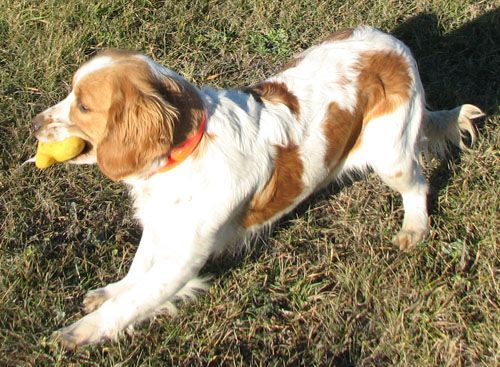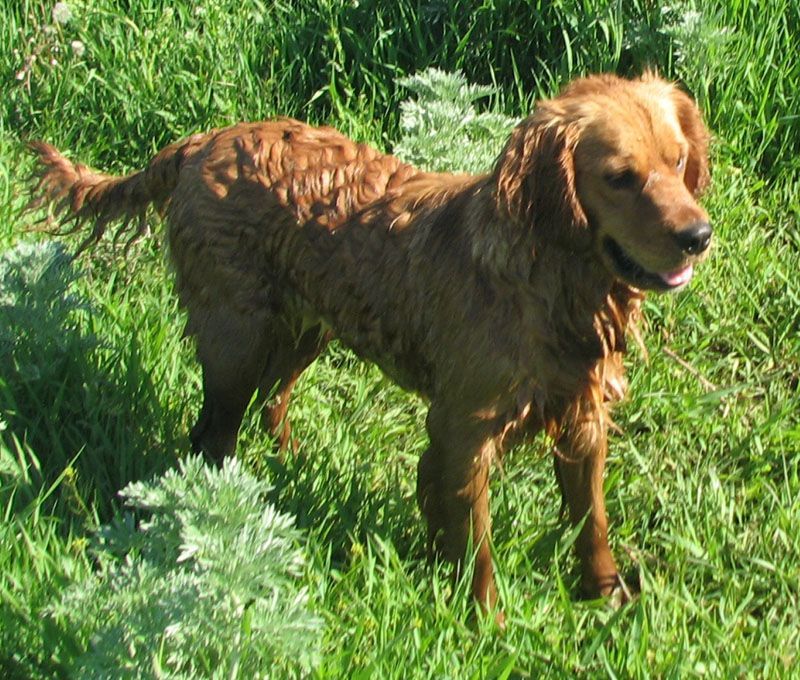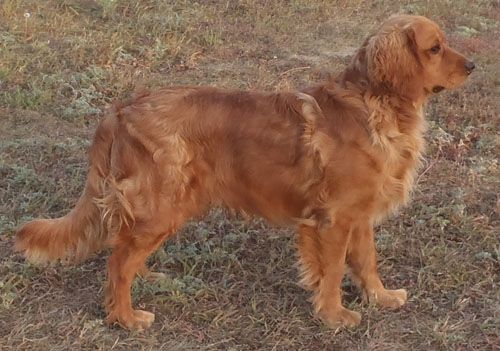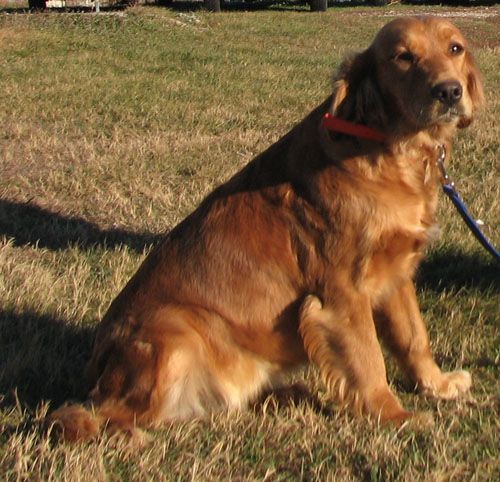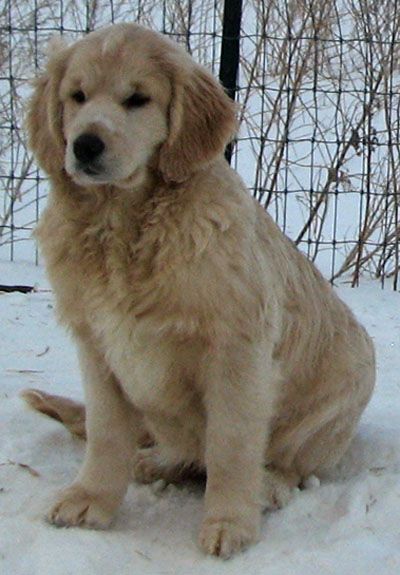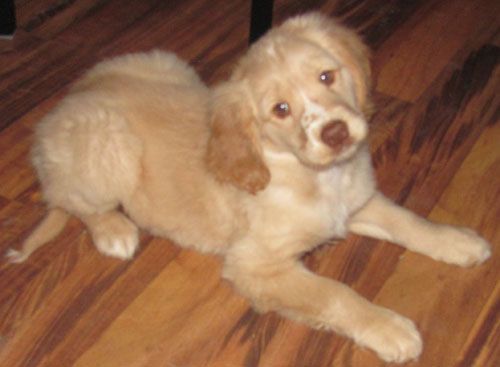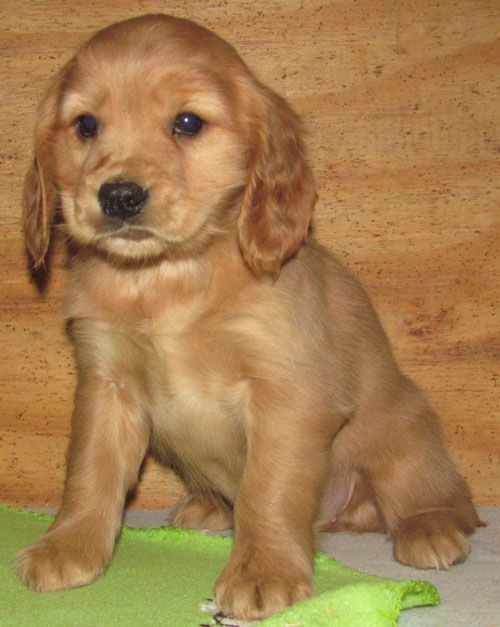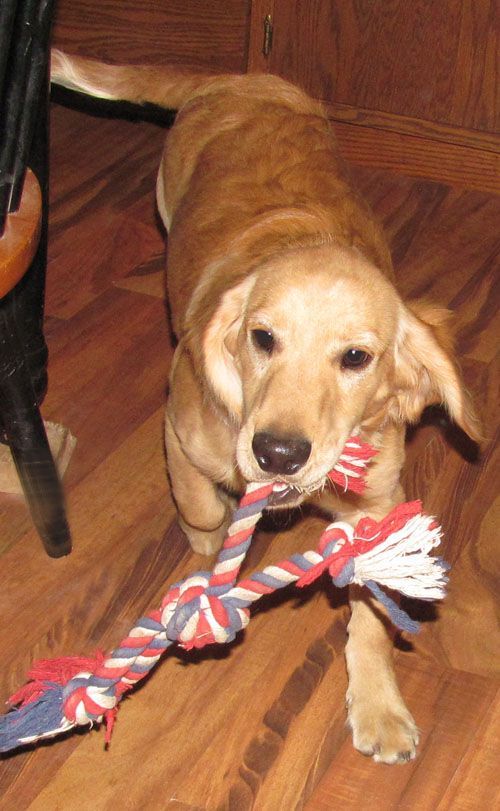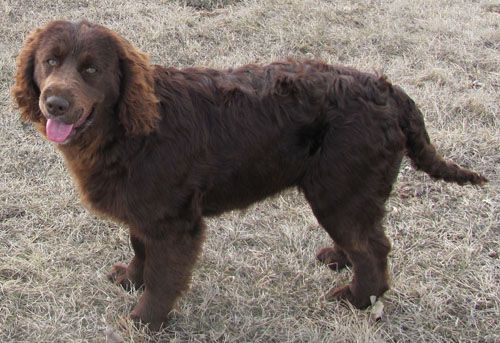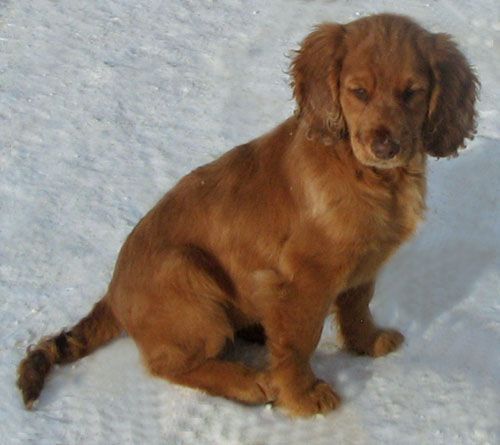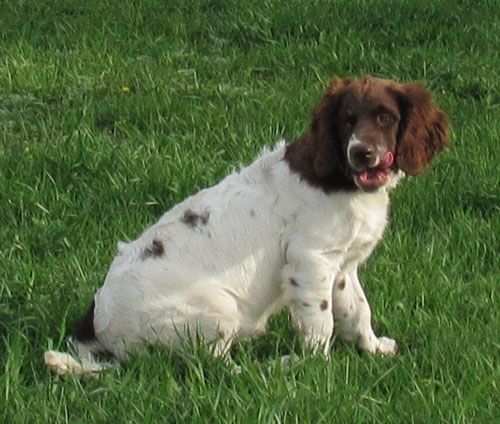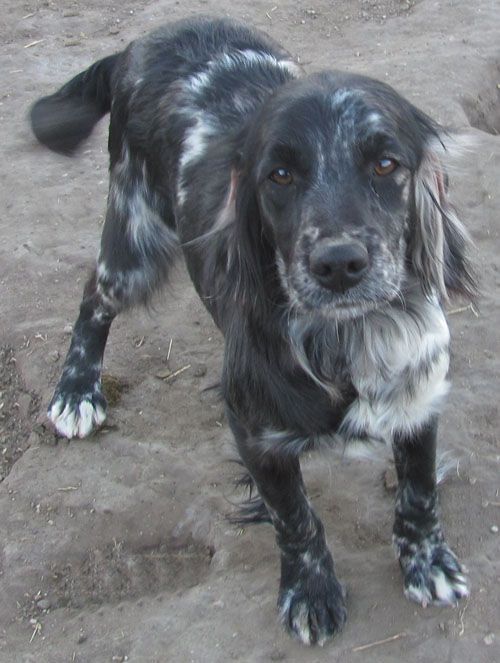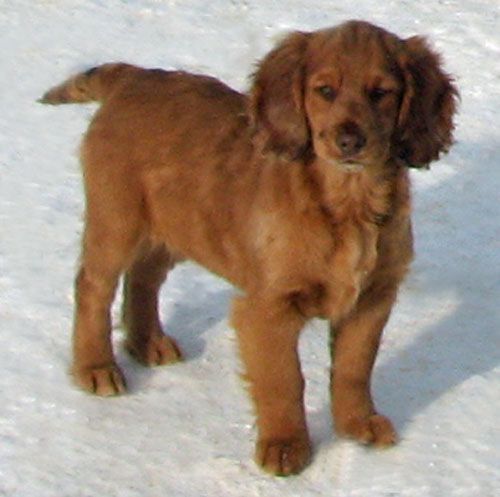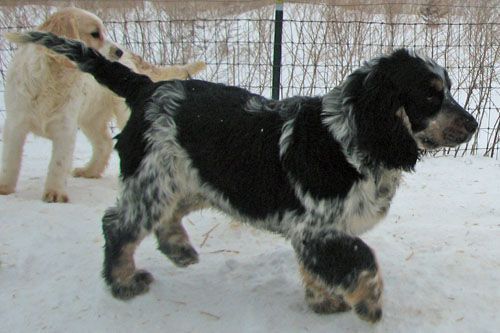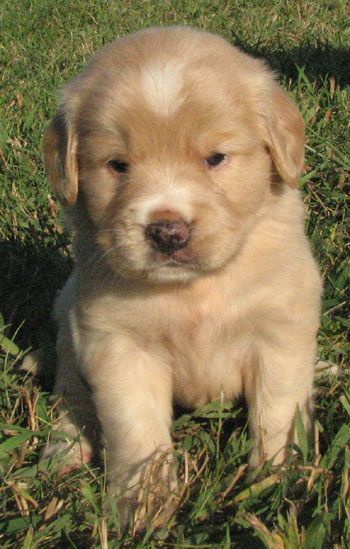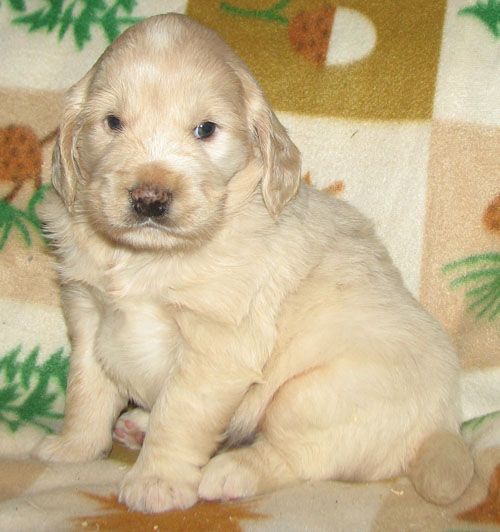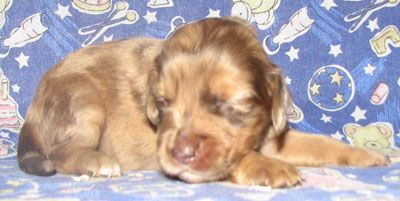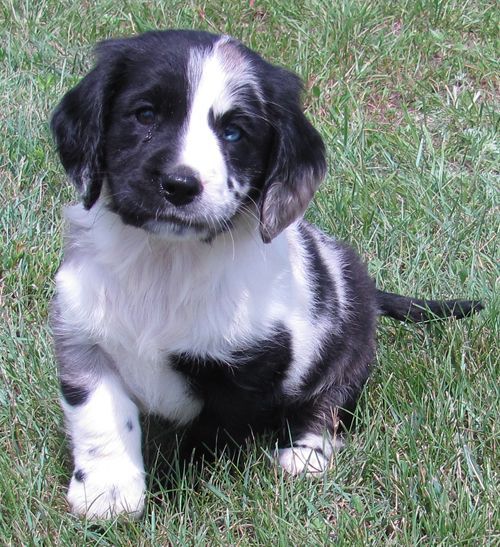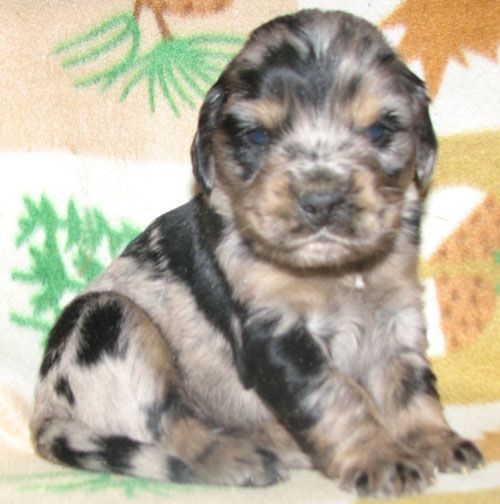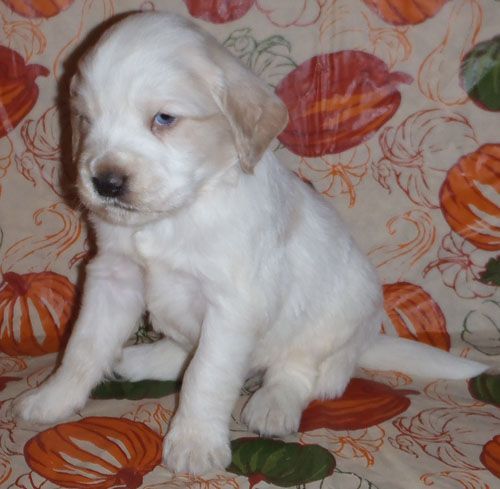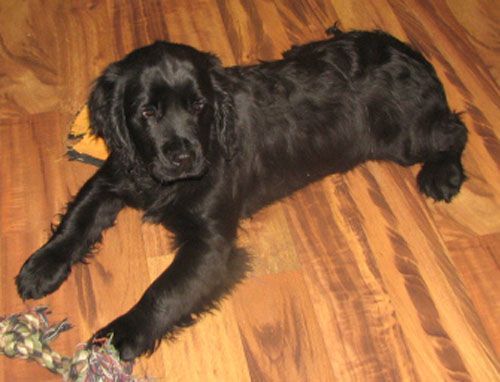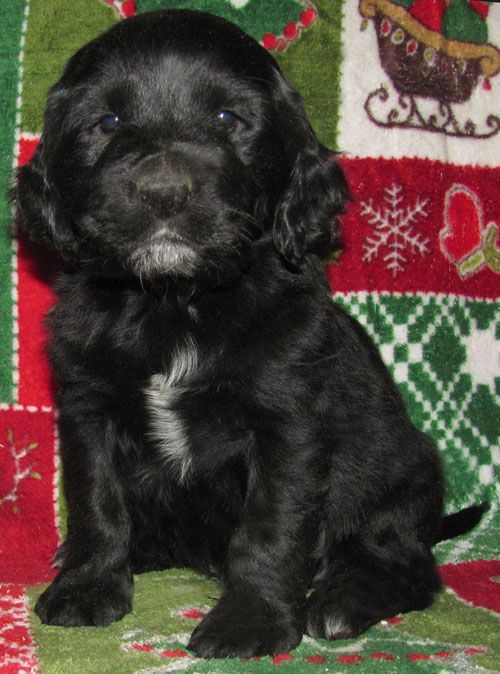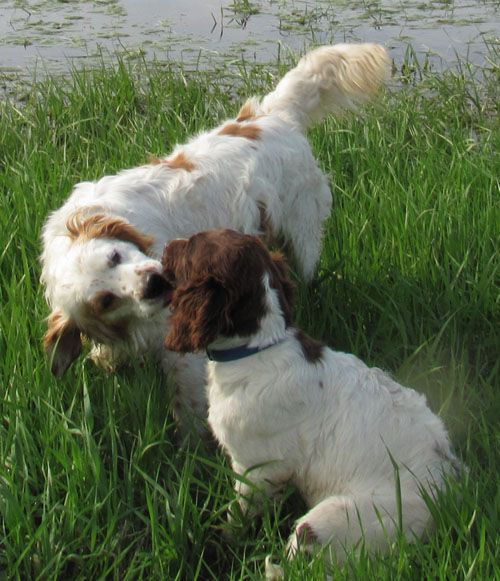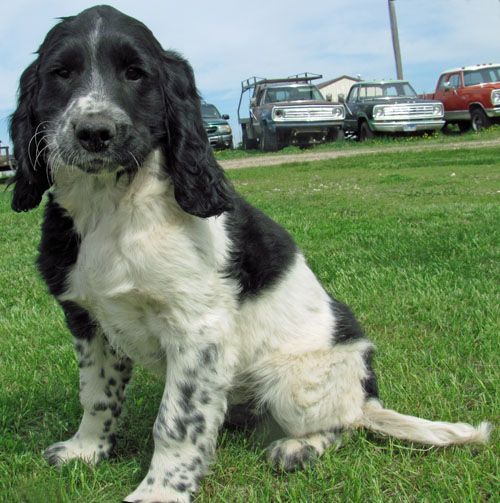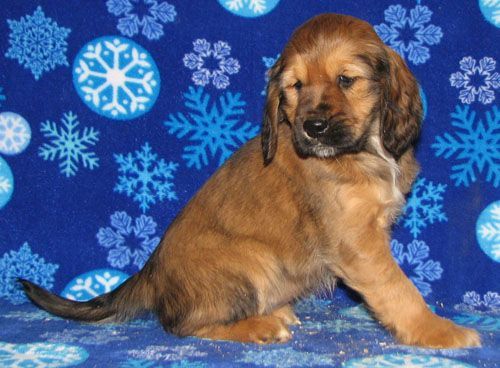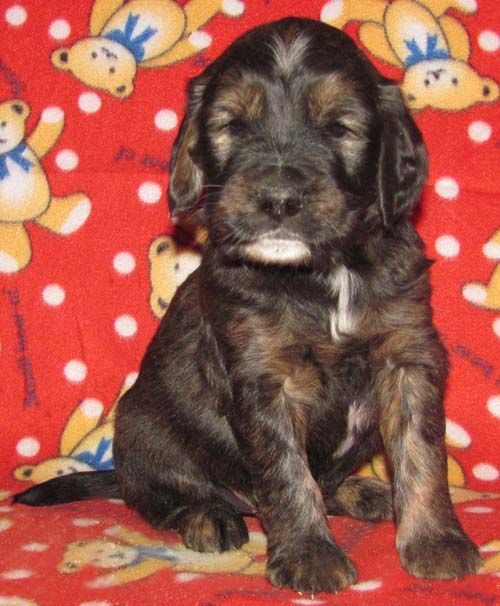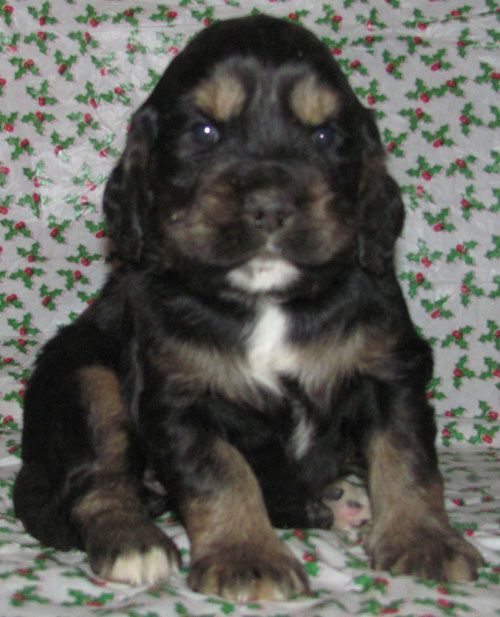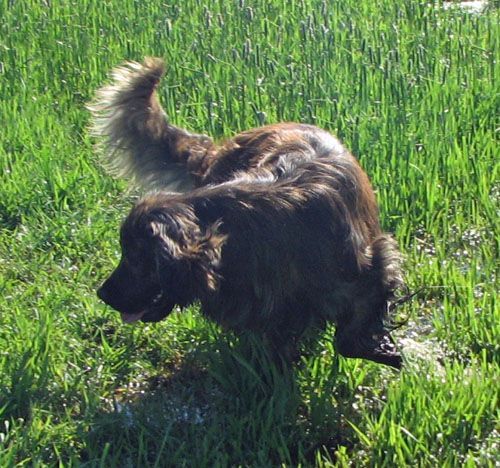Colors
Dakota Sport Retrievers come in all colors and patterns! But we will explain some of our breeding matches better here! We can get such a wide variety of colors in our Dakota Sport Retrievers because American and English Cockers come in many different colors and patterns, and because we are breeding multi generation, registered dogs.
More about Merle! The merle color only shows up on dark colored dogs, such as black or chocolate. Merle is a color dilution. The only base colors are gold, in a variety of shades, chocolate, and black. After the three base colors, there are different color dilutions and patterns, changing the base color. Merle does not change the white coloring on a dog, or the gold/cream/red coloring. Sometimes a cream/gold/red dog is a merle, with no visible markings showing that it is a merle. The only way to know for sure that they are merles is when they throw merle puppies. Other signs that a puppy is a merle, other then the obvious coloring, is sometimes a merle may have blue eyes, or one blue eye, or a partial blue eye. Also, after many years of breeding merles, I do know that often a merle puppy has a spotted nose when very young. The nose does turn black eventually. But is spotted for a few weeks. A Merle can never be bred to another Merle! Resulting puppies from a merle to merle breeding may be born deaf, blind, or even dead? Therefore, it is important to know if a dog is a "hidden" Merle or not.
Black: We do not have any solid black parent dogs. We do not need to, because black is a fall back color, when both parents do not carry the same color genes. If one of our darker colored dogs produce puppies that do not get any of the dilution or pattern genes, they will be black. We can get plenty of solid black puppies without having any solid black parents. However, Black Sport Retrievers are beautiful, with very shiny coats!
Some Parti-Colored Sport Retrievers
Parti Colored & Hunting Line: Parti-colored simply means spotted. The base color may be any color, with white. We find that the spotted Dakota Sport Retrievers tend to have a bit more of a Hunting Dog look to them. Even though all of our Dakota Sport Retrievers have the potential to be trained as hunting dogs, since they all do love water and love to retrieve, we do have a special line that are more bred for hunting! These dogs were carefully selected to have the bloodlines, skill, ability, look, type, muscle, coat, and instincts as hunting dogs. Many Partis do have ticking, also known as freckles, as seen on this black & white Parti's legs.
Sable: Also a dilution gene, which changes the color of dark base colors, like chocolate and black. Cream/gold/red colored puppies do not show sable. Sometimes we do also get tan marked puppies, such as Black & Tan, which is thought to be a form of sable. We may also get Black Golds, which is also a form of sable, but is our rarest coloring!
